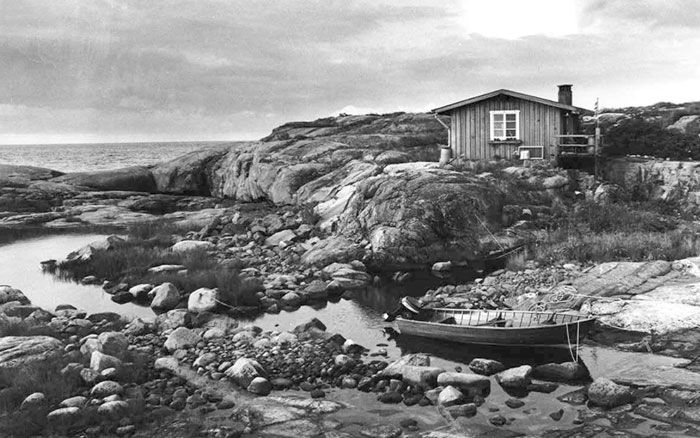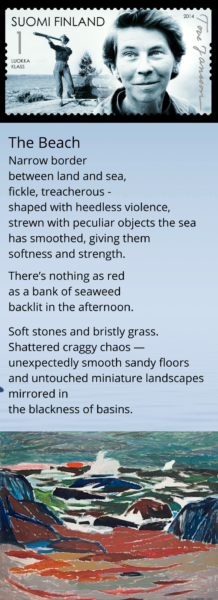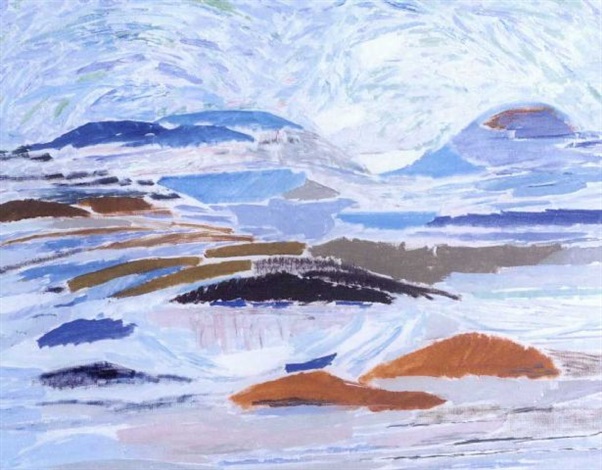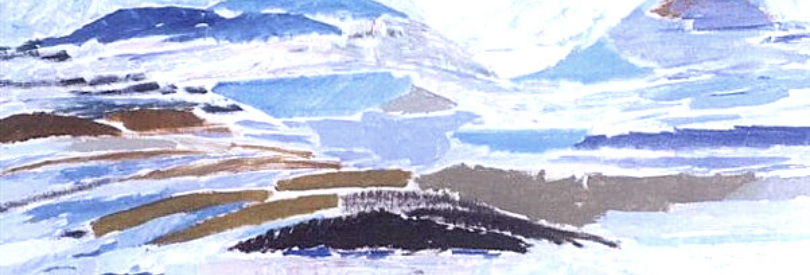Sheltered and isolated by the water that is at the same time an open possibility.
A possibility one never considers.

Going around the beach on one’s island has something of the circle’s satisfying finality.

The beach—the narrow border between land and sea, fickle and treacherous, shaped with heedless violence and strewn with peculiar objects that the sea has smoothed, giving them their softness and strength.
There’s nothing as red as a bank of seaweed backlit in the afternoon. Soft stones and bristly grass.
Shattered craggy chaos—with unexpectedly smooth sandy floors and the untouched miniature landscapes mirrored in the blackness of basins.
Seen from the sea, the island has a sad protective color; it’s small and indifferent. Stone, for the most part, and a tuft of crooked forest. No tall mountains, no dock.
After sunset it becomes a black silhouette, a sloppy speck in the drama of fine cobalt, Naples yellow, and cerulean blue. The horizon vanishes, and close to the water, sea ducks and teals fly in silent, resolute lines. The gulls have turned in for the night and sit motionless on the surrounding islets with their heads all turned the same way.
One goes around the island. Nobody can come, nobody needs to travel, one is completely calm. The clocks have stopped a long time ago, and it’s been a long time since one wore shoes. The feet find their own way, they are confident and self-sufficient, they have become sensitive like hands and they notice, quickly and joyfully, the sand and the moss, the seaweed, the mountain. One’s clothes are soft and light, long ago faded, like one’s hair—it looks like arrowgrass and never gets in one’s face.
Everything concerning oneself has been evened out, neutralized, deprived of any particular interest. One is one’s own companion, someone who seldom speaks and never asks questions; a person one can live with.
Everything is turned outward in calm contemplation of familiar things whose uninterrupted transformations create a remarkable feeling of comfort and suspense.
The mutating sea, the beach that rises and sinks and changes shape, everything that grows and dies and grows again in a new and surprising place, the way in which trees and shrubs withstand the storm, decay takes its natural course on everything one has built, and the pleasure of recognition and repetition.
After being alone for a long time, one starts to listen differently, to perceive the organic and the unexpected all around, to brush against all the incomprehensible beauty of the material.
Old self-absorbed thoughts rush out on new tracks or shrink and die. Dreams become simpler and one wakes up with a smile.
From: “The Island,” by Tove Jannson originally published in 1961 in a travel magazine, Turistliv i Finland. Translated by Hernan Diaz https://www.theparisreview.org/blog/2019/02/13/tove-janssons-the-island/




Such a lovely Post.
Gwen.
All credit to the wonderful Tove Jansson!
such beautiful, exquisite writing; I love islands —
The saying goes that no man is an island. But I think this is a bit of a stretch. Some people really are basically isolated with the minimum land bridge going from their isolated “island” to the mainland, and they abhor contact with the mainland.
— Catxman
http://www.catxman.wordpress.com
In the end, perhaps, we are all islands. And the best we can hope for is that we are part of an archipelago. (The metaphorical potential of islands as analogs for the human condition is considerable!)
We go to sn Island, Phillip Island, every year at Christmas. It is quite busy then, but possible to be away from the crowd. We heave a sigh of relief after we have driven over the long connecting bridge.
If you live on the island of Manhattan, going “to the island” generally means Long Island and getting stuck in traffic on the Long Island Expressway, the L.I.E.
Yes, a lot of people say, when frustrated with life “I’m going to go and live on an island”. I seem to recall saying more often that I would go and live in a cave. I shall have to consider that!
The call of something simpler, and the desire to run away to…somewhere…can take many forms!
Thank you for the reminder. A beautiful extract.